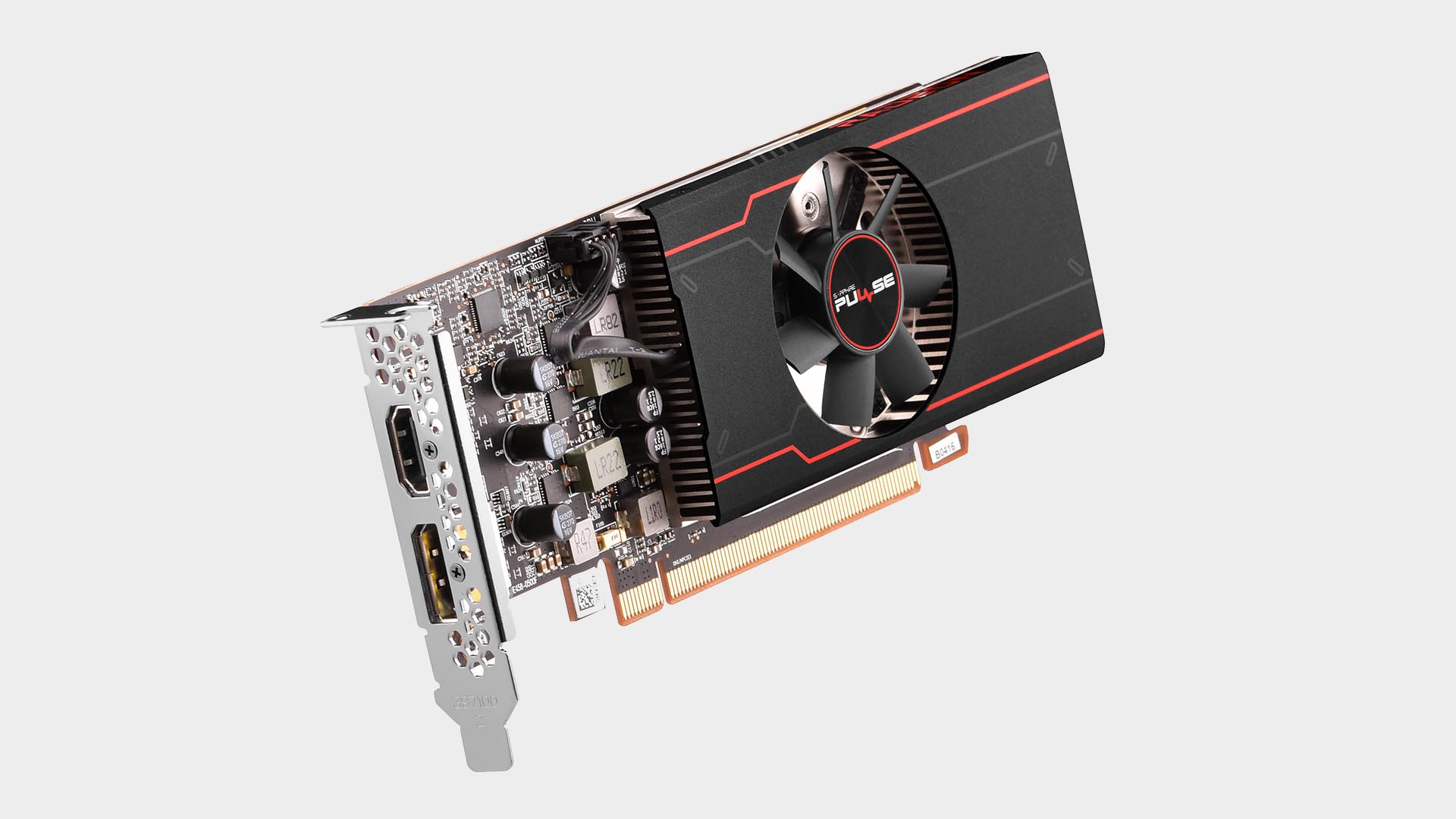AMD quietly launches entry-level Radeon RX 6400
There's still a market for entry-level discrete cards.

AMD has quietly launched its entry-level Radeon RX 6400 graphics card with a recommended price of US$159, making it the most affordable RX 6000 series card to date. The RDNA2-based RX 6400 includes a trimmed-down version of the 6nm Navi 24 GPU, the same one that powers the RX 6500 XT. It includes 768 Shader units and comes with a typical board power of 53W.
That power consumption figure means it can get all of its power via the PCIe slot. That's one of the major advantages of the 6400. It can easily be integrated into any of the millions of Dells or HP systems of the world, without any need to worry about the power supply inside.
Many 6400 cards are shipping with either single slot cooling, low profile PCBs or both. That's an important feature for small form factor systems.
Performance wise, AMD touts the RX 6400 as superior to the GTX 1050 Ti and GTX 1650 while consuming less power. Assuming those numbers hold up in independent testing, and barring any PCIe 4x limitations, that's the kind of performance that will appeal to casual gamers. AMD claims the RX 6400 can maintain 60fps in a range of modern games, though the more demanding ones will require low settings, and you can forget about things like ray tracing.

Best CPU for gaming: The top chips from Intel and AMD
Best gaming motherboard: The right boards
Best graphics card: Your perfect pixel-pusher awaits
Best SSD for gaming: Get into the game ahead of the rest
If you're considering buying an RX 6400, it's important to be aware of its limitations. It's limited to just single HDMI 2.1 and DisplayPort 1.4 outputs. A third would be nice, but that's a legacy of its mobile origins. There's also its PCIe x4 limitation. A card at this level shouldn't face any significant bottleneck in a PCIe 4.0 or PCIe 3.0 system, but it may do with an older PCIe 2.0 system, which is where I'd assume many RX 6400s will end up, perhaps as a replacement for a dead or obsolete GPU.
It lacks a fully featured media encoder and decoder which will limit its appeal to HTPC users. That will depend on the accompanying CPU though. An APU might be more appealing to users looking to build a media box.
If you're aware of its limitations and don't expect too much of it, the RX 6400 could carve out a niche for itself, especially since Nvidia doesn't yet have an Ampere generation card to compete against it. I feel that its $159 price is too high, but this isn't a card that has any appeal to miners and it will surely fall in time. If that happens, the RX 6400 will make for a reasonable entry-level gaming card. Load up PUBG or a bit of CS:GO and it will do the job, while sipping power and staying cool.
The biggest gaming news, reviews and hardware deals
Keep up to date with the most important stories and the best deals, as picked by the PC Gamer team.

Chris' gaming experiences go back to the mid-nineties when he conned his parents into buying an 'educational PC' that was conveniently overpowered to play Doom and Tie Fighter. He developed a love of extreme overclocking that destroyed his savings despite the cheaper hardware on offer via his job at a PC store. To afford more LN2 he began moonlighting as a reviewer for VR-Zone before jumping the fence to work for MSI Australia. Since then, he's gone back to journalism, enthusiastically reviewing the latest and greatest components for PC & Tech Authority, PC Powerplay and currently Australian Personal Computer magazine and PC Gamer. Chris still puts far too many hours into Borderlands 3, always striving to become a more efficient killer.

